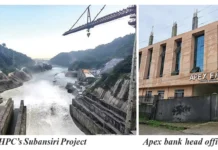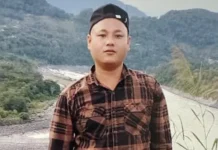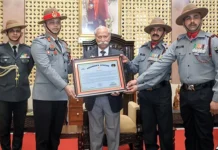[Ripi Bagra]
On 22 April, 2025, the idyllic slopes of Pahalgam’s Baisaran Valley were stained with blood as gunmen unleashed a hail of bullets on unsuspecting tourists, killing at least 26 and wounding dozens more. The timing was too stark to be coincidental – Pakistan Army Chief General Asim Munir had days earlier declared that “Kashmir is our jugular vein” – a hate-filled invocation that intelligence agencies now believe served as a dog whistle to embolden militant handlers. Even as US Vice President JD Vance toured India, and Prime Minister Narendra Modi was deepening ties in Saudi Arabia, the bloodbath in Pahalgam was designed to hijack global headlines and undermine New Delhi’s diplomatic momentum. The shadow of history loomed large – the massacre evoked memories of Chittisinghpora in March 2000, when 36 Sikh villagers were killed on the eve of President Clinton’s visit, a grim reminder that proxy terror often strikes at moments of high-stakes diplomacy.
The claim of responsibility by The Resistance Front (TRF) peeled back another layer in Pakistan’s proxy warfare playbook. Conceived in the wake of the August 2019 abrogation of Article 370, TRF began as an online entity before morphing into a ground force amalgamating cadres from Lashkar-e-Taiba and other outfits, all rebranded under the neutral-sounding banner of ‘resistance’ to suggest indigenous uprising. By shedding overtly religious names, Pakistan’s Inter-Services Intelligence (ISI) sought plausible deniability while preserving command-and-control lines. Intelligence officials confirm that TRF militants receive funding, training, and strategic guidance from across the Line of Control, even as Islamabad’s official stance remains one of feigned ignorance.
The tactical range of TRF underscores its dual mandate. No longer content with engagements against security forces alone, the group has perfected hit-and-run ambushes on civilians – tourists, migrant labourers, and even Kashmiri Pandits, calculating that high-profile attacks generate disproportionate psychological impact. By framing these assaults as homegrown uprisings, Pakistan’s ISI can point to “indigenous resistance,” even as it directs funding, training, and strategic guidance from safe havens across the Line of Control. The result is a sophisticated form of proxy warfare, one that thrives on plausible deniability and the relentless erosion of public confidence in state protection. Targeting tourists during peak season dealt a direct blow to Kashmir’s recovering economy, devastating local livelihoods tied to tourism and horticulture. The attack also aimed to spread fear and deepen communal divisions across the region and beyond.
For New Delhi, this murky nexus presents a vexing dilemma. Conventional wisdom has favoured animated responses, cordon-and-search operations, targeted strikes, and intensified patrols. But every such operation, however precise, risks alienating local populations when it entails curfews, communication blackouts, and civilian inconveniences. The collateral fallout can deepen the very grievances that TRF exploits, perpetuating a vicious cycle of violence and recrimination.
Against this backdrop, the human toll remains staggering. Since 1989, Kashmir’s insurgency has claimed nearly 15,000 civilian lives and over 6,000 security personnel, while more than 23,000 militants have been killed in encounters. Each loss is a potential seed of radicalisation, as bereaved families grapple with trauma, economic hardship, and a sense of abandonment by the state. In this context, TRF’s strategy of targeting unarmed civilians seeks not only to terrorise but to convert despair into defiance, recruiting disenfranchised youths with both coercion and the promise of ideological vindication.
What, then, must India do differently? The pursuit of tactical victories will remain necessary but insufficient. As long as Pakistan can hide behind the illusion of local militancy, any military gains risk being reversed by the next headline-grabbing atrocity. Instead, New Delhi should pivot towards cross-border involvement through open intelligence sharing, meaningful decentralisation of power to local governance institutions, and long-term investment in youth-oriented development, education, and mental health support to rebuild trust in conflict-affected communities.
India must collect and publicly present forensic evidence that clearly links TRF to Lashkar-e-Taiba and the ISI. Such transparency can dismantle Pakistan’s claims of plausible deniability and rally international condemnation. Political reform, meanwhile, must entail more than symbolic gestures; reviving elected institutions in Srinagar and empowering district-level councils to manage local budgets would signal a genuine willingness to share sovereignty, undercutting TRF’s narrative of “foreign occupation.” Finally, targeted development projectscan offer at-risk youths credible alternatives to the militant path.
The Pahalgam massacre was not merely a horrific crime against innocents; it was a clarion call to acknowledge that proxy terror, when left unchecked, undermines both security and the fragile trust that holds communities and institutions together. Dismantling The Resistance Front’s protective shell will require more than force of arms: it demands political courage, administrative innovation, and sustained community engagement. Only by addressing the root causes of alienation and by stripping Pakistan’s proxies of their cloak of anonymity can India hope to transform Kashmir from a theatre of conflict into a landscape of reconciliation and resilience. (The contributor is an independent researcher)




